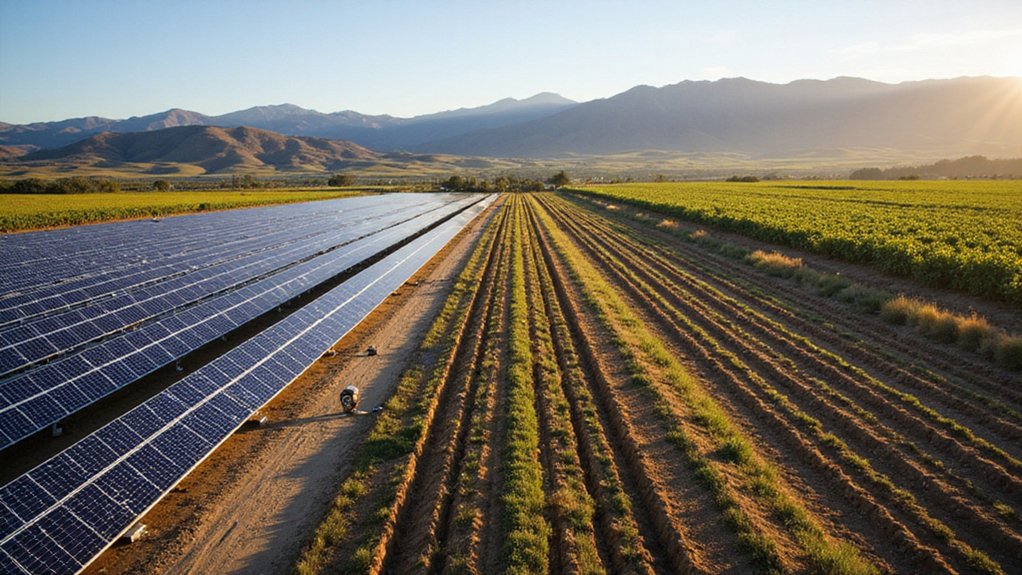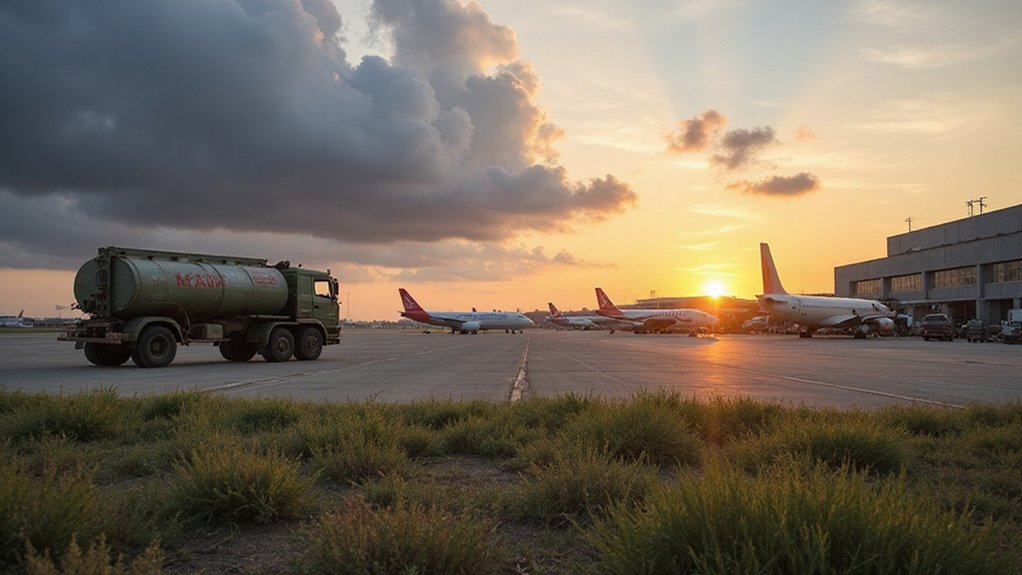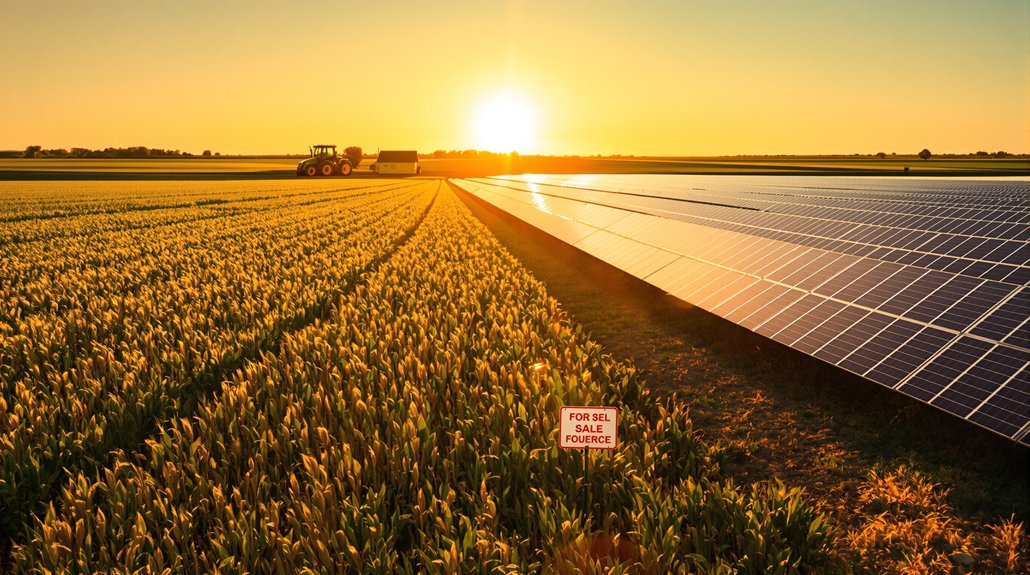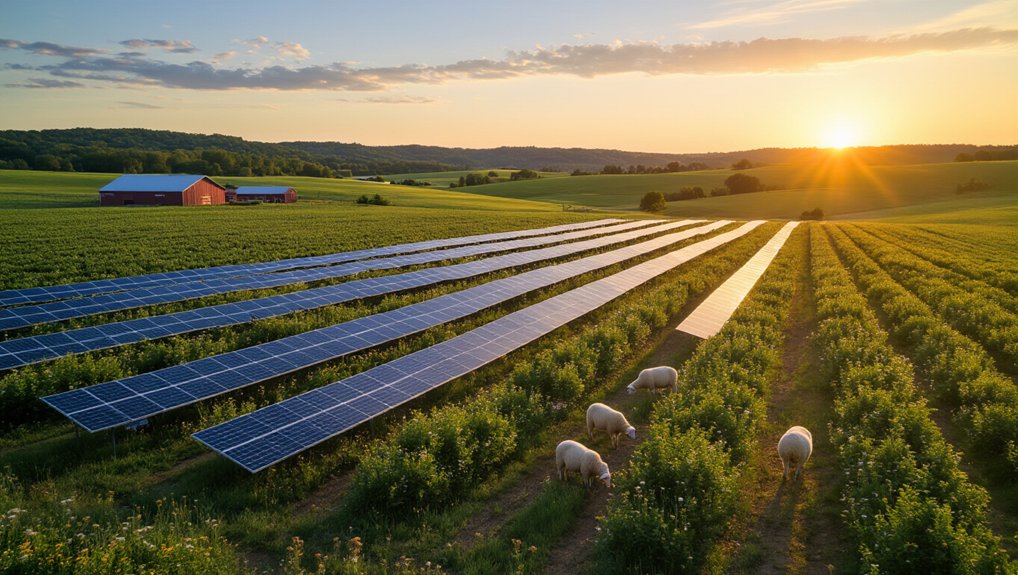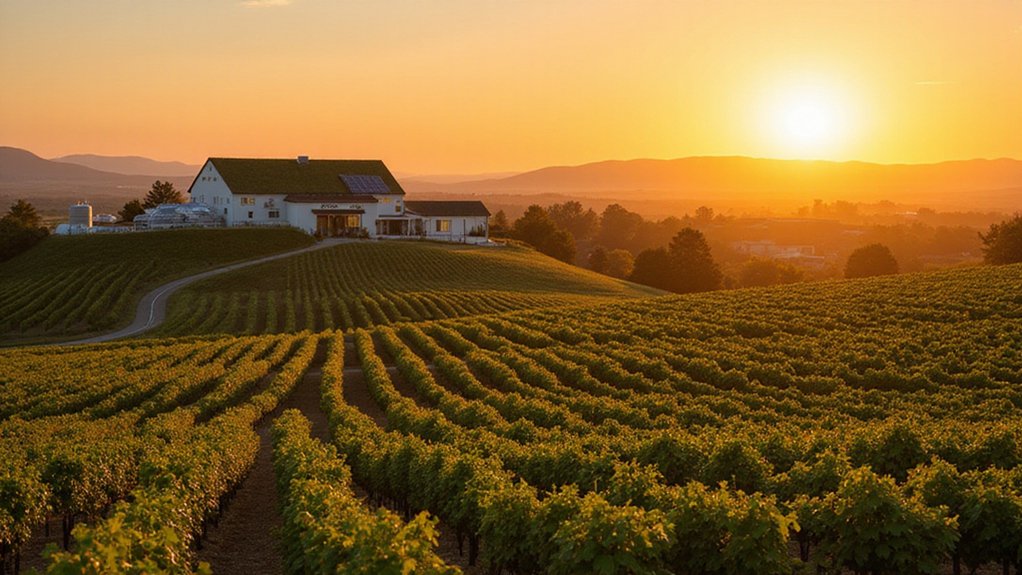California’s farmlands are rapidly converting to solar installations, with over 38,000 acres of cropland now hosting solar panels. This transformation has injected $111.9 billion into the state’s economy and provides farmers with steady income beyond traditional agriculture. Solar now supplies more than 31% of California’s electricity. The trend raises important questions about balancing food production with clean energy needs. The dual-use farming approach offers a potential solution to this growing dilemma.
Thousands of acres of California cropland are now serving a different purpose – harvesting sunshine instead of food. The state now holds over 49,000 megawatts of solar capacity, with panels covering what was once fertile farmland. This shift represents billions in local investment and a new income source for many landowners.
Solar energy now supplies more than 31% of California’s electricity. The boom has created a financial windfall, injecting $111.9 billion into the state’s economy. Many farmers who once relied solely on crop yields now collect regular checks from energy companies.
Solar’s economic boom provides California farmers with steady income beyond traditional agriculture.
Between 2012 and 2020, 43% of rural solar farms were installed on former cropland. Nearly 30% of large-scale solar projects occupy what were croplands and pastures, covering about 38,000 acres. Most utility-scale installations are on shrublands, with rangelands accounting for 93,000 acres.
This transformation hasn’t come without concerns. Land now hosting solar panels could have fed an estimated 86,000 people. Debates continue over prioritizing food versus energy production as population growth increases pressure on agriculture.
Some solutions are emerging. “Colocation” or dual-use farming allows crops and solar arrays to share the same land. This approach aims to maximize productivity while maintaining some food production. Studies show certain crops can thrive beneath and between properly spaced solar panels. Research from Michigan State University found that farmers using small land portions for solar arrays demonstrated improved financial security while maintaining agricultural production.
The solar expansion supports California’s climate goals by reducing carbon emissions and fossil fuel dependence. When placed on already disturbed or marginal lands, solar farms can minimize environmental impact. The transition to solar power has significantly improved air quality in communities throughout the state.
California leads the nation in solar innovation, with projects generating maximum power during peak demand periods, especially on hot summer days. Both large solar farms and rooftop systems contribute to grid reliability. The state’s ambitious energy storage policies have driven a 1,250% increase in storage deployment since 2019, allowing solar power to be used even when the sun isn’t shining.
Over the next five years, California expects to add another 19,038 megawatts of solar capacity. For many rural communities, this represents not just an energy transformation but an economic one as well.
References
- https://www.ers.usda.gov/amber-waves/2024/september/agricultural-land-near-solar-and-wind-projects-usually-remained-in-agriculture-after-development
- https://msutoday.msu.edu/news/2025/should-farm-fields-be-used-for-crops-or-solar-msu-research-suggests-both
- https://seia.org/state-solar-policy/california-solar/
- https://solarrights.org/blog/2024/12/13/curtailment/
- https://farmlandinfo.org/wp-content/uploads/sites/2/2023/03/AFT_FUT2040-solar-white-paper.pdf
